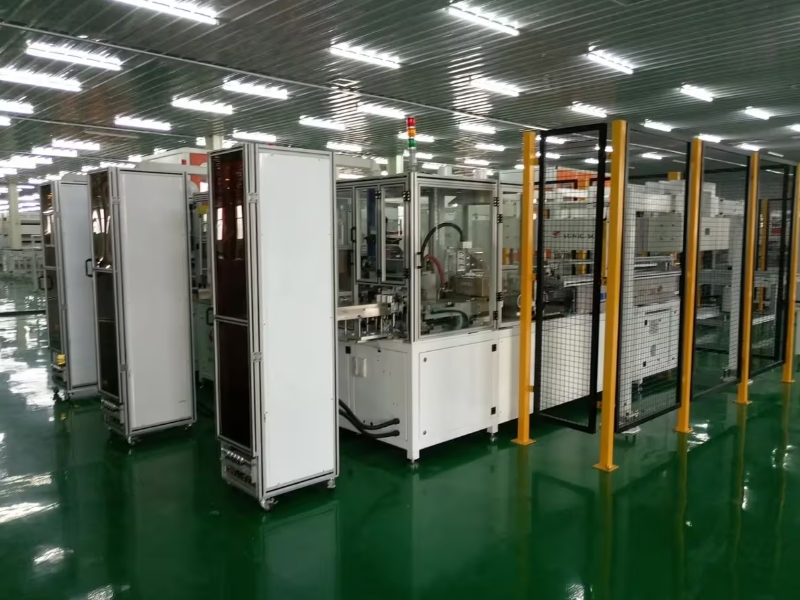What is the basic composition and structure of a lithium battery pack production line?
In the field of new energy, the lithium battery pack production line is a key facility for assembling battery cells into directly usable battery packs. To understand its basic composition and structure, we need to start from each link of the production process.

Cell loading and testing area
This is the starting part of the production line. As the core of a battery pack, the quality of the battery cell directly affects the performance of the battery pack. High precision feeding equipment is equipped here, which can accurately grasp the battery cells and place them in designated positions. At the same time, advanced detection devices such as internal resistance testers and voltage detectors are used to conduct preliminary screening of battery cells, removing those that do not meet the parameter requirements, and ensuring that the quality of battery cells entering the subsequent stages is up to standard.
Cell assembly area
In this area, the battery cells will be arranged and combined according to the design requirements. Common methods include series, parallel, or a combination of series and parallel. There are specialized fixtures to ensure accurate positioning of the battery cells and facilitate subsequent connections. At the same time, some auxiliary components such as insulation sheets will be installed to prevent short circuits between battery cells and ensure the safety of the battery pack.
land
Welding is a key process in the production of lithium battery packs, which is related to the electrical connection reliability of the battery pack. Laser welding is mainly used here. Laser welding has concentrated energy, narrow and beautiful welds, small heat affected zone, and can reduce damage to battery cells. Laser welding equipment ensures firm and low resistance welding between battery cells and between battery cells and connecting pieces by accurately controlling welding parameters such as current, voltage, welding time, etc.
Module detection and assembly area
After welding is completed, a comprehensive inspection of individual battery modules will be conducted, including electrical performance testing such as capacity testing, charge and discharge efficiency testing, as well as appearance inspection to check for welding defects, shell damage, and other issues. The modules that pass the inspection are further assembled to form larger battery pack units. Some components of the Battery Management System (BMS) will also be installed in this area, which can monitor the voltage, current, temperature and other parameters of the battery pack in real time, ensuring the safe and stable operation of the
battery pack.
Finished product testing and packaging area
This is the final stage of the production line. Conduct final performance testing on the complete lithium battery pack, simulating various usage scenarios such as high temperature, low temperature, overcharging, overdischarging, etc., to ensure that the product can adapt to different environments. Qualified products are usually packaged using anti-static packaging materials to prevent static electricity from damaging the battery pack, and then packaged for shipment.
The various components of the lithium battery pack production line are closely coordinated, from the screening of battery cells to the packaging of finished products, and every link is strictly controlled to jointly build an efficient and reliable production system, providing high-quality lithium battery products for the new energy industry.
Recent Posts
- What are the advantages of laser welding machines in lithium battery pack production lines?
- What issues should be noted when choosing a lithium battery pack production line?
- Quality Inspection and Control of Lithium Battery Module Pack Production Line
- Cell grouping and sorting process in lithium battery module pack production line
- What are the safety hazards of lithium battery pack production lines and how can they be prevented?
INQUIRY

